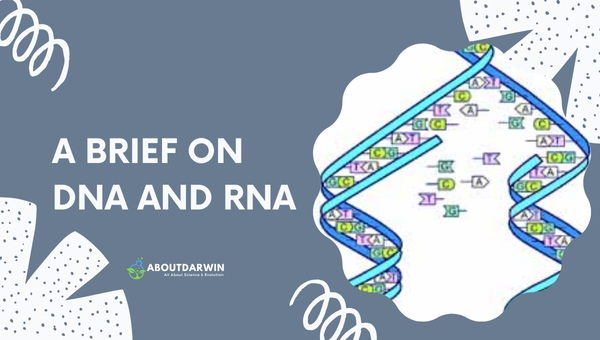Physical Address
304 North Cardinal St.
Dorchester Center, MA 02124
Understanding the intricate mechanisms of our body is much like unraveling a complex puzzle. Two such fundamental processes that keep the wheels of life turning are Replication and Transcription. These processes are responsible for genetic continuity and protein synthesis, enabling life as we know it.
DNA Replication and RNA Transcription, although seemingly complex terms, hold within them concepts that are beautifully precise, methodical – true marvels of nature.
However, as similar as they may appear to those newly introduced to these concepts, replication and transcription have unique roles to play in cellular activity. Let’s delve into these processes and comprehend their respective significance.
Contents
Certain things about life have continued to astound and intrigue us from the day we started studying biology. DNA and RNA are two such marvels.
Briefly put, both DNA (Deoxyribonucleic Acid) and RNA (Ribonucleic Acid) carry genetic information of all life forms guiding their biological functions. They are the blueprints that contain instructions for building every part of an organism.

The differences between these two molecules lie in their structure and function. DNA, a double-stranded molecule, is the primary genetic material directly responsible for development and inheritable traits.
On the other hand, RNA is a single chain of nucleotides primarily involved in protein synthesis following the master plan outlined by DNA. This interplay forms the foundation of processes like Replication and Transcription.
Also Read: Mastering Polymerase Chain Reaction: Principle & Application
| Replication | Transcription | |
|---|---|---|
| Objective | Produces two identical DNA molecules from one original DNA molecule | Generates an RNA molecule from a DNA template |
| Location | Nucleus in eukaryotic cells; Cytoplasm in prokaryotic cells | Nucleus in eukaryotic cells; Cytoplasm in prokaryotic cells |
| Molecules Involved | DNA polymerase, Helicase, Primase, Ligase | RNA polymerase, Promoter sequence, Terminator Sequence |
| Product | Two double-stranded DNA molecules. Each one consists of one old strand (original template) and one newly synthesized strand. | No proofreading activity, thus more error-prone compared to replication |
| Error Correction | Yes, the proofreading ability for error correction is present due to the activity of the exonuclease enzyme | Yes, the proofreading ability for error correction is present due to the activity of the exonuclease enzyme. |
Replication, in the world of genetics, is a mesmerizing process through which a cell makes an exact copy or, to draw a more precise picture – duplicates its DNA. The magic of it all unfolds right before cell division begins.
Now you may wonder – why? Well, it’s simple maths! Each new cell needs its very own complete set of DNA. Moreover, replication ensures that genetic information stays consistent and the life story written in our genes continues for another generation.
The course plot for the saga of replication involves an array of characters, including enzymes like DNA polymerase, working tirelessly as diligent scribes, replicating each chapter accurately from the DNA template.
It’s quite an intricate dance aimed at making sure every new chromosome is equipped with one old and one new strand of DNA – this is referred to as semi-conservative replication. Pioneered by Watson and Crick’s double helix model with base pairing stunts proving crucial throughout! Doesn’t that make you marvel at life at such a microscopic level?
DNA replication is an intricate dance of molecules, a fundamental process essential to life. At the heart of this biological phenomenon are key players, each performing its specific role with remarkable precision.
As we gaze into the microscopic world of the cell, here’s a brief introduction to the components that are critical to the replication of DNA.
All these components collectively play integral roles in ensuring an accurate and fuss-free process of replication!
Transcription, another fascinating act in the genetic play, is when DNA essentially takes center stage to narrate a part of its sequence into RNA. Think of it as crafting a diary entry from a lifetime of chapters, with each entry focusing on synthesizing a specific protein that today’s chapter demands.
This amazing process takes place inside the nucleus and kicks off at the promoter region – the starting line for transcription. As the event unfolds, an enzyme called RNA polymerase gallops along the DNA strand, carefully matching RNA nucleotides with their DNA counterparts.
The result? A complementary strand of messenger RNA (mRNA), holding within its code instructions for specific protein synthesis. Once completed, this mRNA moves on to fulfill its destiny in another phenomenal process known as translation. But that’s another story! And so you see – transcription isn’t just about retelling; it’s purpose-driven storytelling!
Also Read: Serratia Marcescens: Biochemical Test & Identification
Entering the intricate dance of gene expression, let’s spotlight the major players crucial in the elaborate pathway of transcription.
From unwinding the helix to synthesizing messenger RNA, each molecular participant performs a vital role. These players ensure that the information coded in our DNA is precisely transcribed and that genetic instructions are effectively relayed to the cellular machinery.
Before we dive into the minutiae of how our genetic information is duplicated, let’s familiarize ourselves with the key players involved in this essential biological phenomenon.

These molecular maestros work in concert to ensure that every cell in our body receives an accurate copy of our DNA.
Transcription, the process of converting DNA into RNA, is a cornerstone of molecular biology that ensures the correct expression of genes. This intricate dance of molecules within the nucleus of every cell involves a suite of specialized enzymes and proteins.
Understanding the roles each component plays gives us insight into how genetic information is faithfully translated into the proteins that drive life.
Also Read: Citrobacter Freundii: Biochemical Tests & Identification
DNA replication is much more accurate than RNA transcription. In replication, only one base in every ten billion, on average, is inaccurately placed.
Transcription is the process that leads to the synthesis of mRNA. DNA replication stands out to be more accurate than transcription since the DNA molecule forms a replica of itself in DNA replication, while in transcription, a segment of DNA molecule is used to make mRNA.
Yes, DNA replication precedes transcription in the context of the cell cycle. The process of DNA replication occurs during the S phase (Synthesis phase) of interphase in the cell cycle, where the entire genome is duplicated. Once a cell has passed the S phase and the DNA is replicated, it may enter the G2 phase and eventually mitosis, where the cell divides.
1- Both processes use DNA as the template. 2- Phosphodiester bonds are formed in both cases. Transcribed in response to the development requirements, physiological needs, and environmental changes.
Yes, DNA replication precedes cell division to ensure that each daughter cell receives a complete set of genetic information. Transcription can occur both before and after DNA replication, as it is a continuous process needed for gene expression throughout the life of a cell.
Replication and transcription compete for the same DNA template and can, therefore, interfere with each other. Transcription can arrest DNA synthesis and compromise replication fork stability, thus causing replication stress.
Understanding Replication and Transcription – two fundamental processes in our cells, is not just for the curious minds or those in the biomedical field. It’s an essential part of appreciating the marvelous intricacy that goes into keeping us living and thriving.
From our genetic material being passed on with fidelity, to every protein constructed correctly – this is where life as we know it begins.
Additionally, recognizing the differences between these two processes lays the groundwork for understanding more complex topics like genetic disorders or treatments like gene therapy.
The distinction between replication, which ensures our DNA’s continued existence, and transcription – a key player in interpreting that DNA into functional units, serves to illuminate the phenomenal order within each cell of our bodies.
In essence, appreciating this dynamic duo of Replication and Transcription brings us one step closer to decoding the language of life itself.